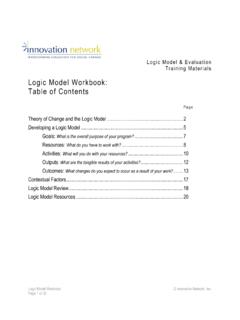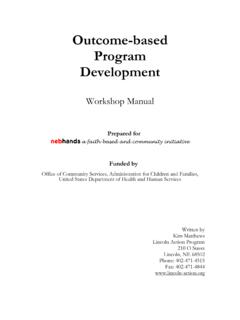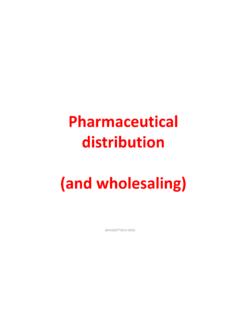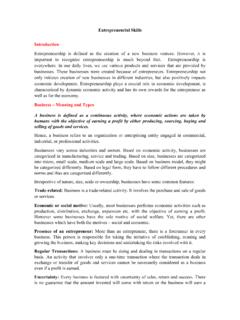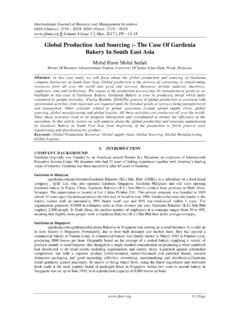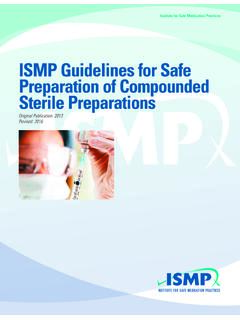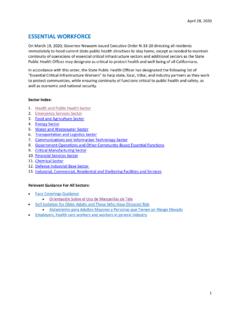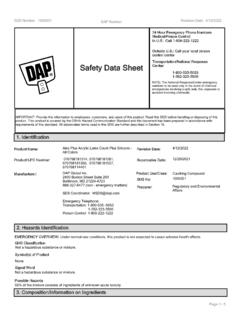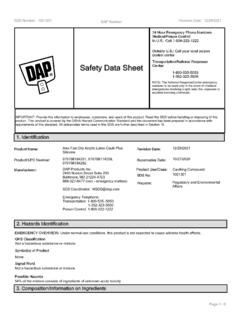Transcription of Mapping the Assets of Your Community
1 Mapping the Assets ofYour Community : A Key component for BuildingLocal CapacityLionel J. Beaulieu, Southern Rural Development CenterInstructor s GuideDocumentTTwwoo AApppprrooaacchheess ttoo SSoollvviinngg CCoommmmuunniittyy CCoonncceerrnnss:: PPrroobblleemm-ssoollvviinngg AApppprreecciiaattiivvee IInnqquuiirryyCapacity inventory of IndividualsCommunity Participation and Leadership InventoryInventory of Local Institutions WorksheetGroup Skills of Volunteer Organization MembersPowerPoint PresentationAsset Mapping many communities across the country, itis not uncommon for local leaders and citi-zens to assemble together to try to make theircommunity an even better place in which tolive.
2 Unfortunately, the beginning point forthese discussions usually is focused on the var-ious problems and concerns existing in thecommunity. In some cases, these communitygroups seek the advice of friends and neigh-bors as to what they feel are the major prob-lems. In other instances, elaborate Community -wide surveys are conducted of local residentsseeking their input on various topics. In the end, what is produced is a laundrylist of all the problems being experienced byresidents of these communities. The list mightinclude concerns with the local school system,the lack of health services, transportationproblems, inadequate child care services, limit-ed availability of jobs that pay a decent wage,or the lack of good recreation programs forchildren.
3 No matter what Community you aretalking about, or how big or small the com-munity might be in terms of population, com-munity groups that begin taking a hard lookat their Community by first documenting allof its problems, are already starting thingsoff on the wrong s not to suggest that communitiesshould try to sweep all their problems underthe rug. What it does indicate is the best wayto effectively address the challenges that facecommunities is to have a good knowledge ofthe resources available to work on local , an important beginning point involvesmapping the Assets of the Community theskills and talents of local residents, as well asthe capabilities available or possible throughlocal organizations and institutions.
4 Collect-ively, these resources offer the wherewithal toaddress the host of important issues impactingthe this brief article, a procedure for mappingthe Assets of a Community is described. Theapproach is one that has been developed byJohn P. Kretzmann and John L. McKnight intheir book, Building Communities From theInside Out: A Path Toward Finding andMobilizing a Community s Assets [4]. It is aprocess that can be used in any Community ,and offers an effective strategy for involving avariety of people and organizations in helpingbring about improvements in a communities.
5 While this document embraces many of thekey concepts advanced in the Kretzmann andMcKnight volume, we seek to extend theirwork in two important ways. First, we offer a2 Asset MappingMapping theAssets of YourCommunity: A Key componentfor Building LocalCapacityLionel J. Beaulieu, Southern Rural Development Centercreative strategy foruncovering the poolof individuals whohave the ingredientsfor taking on greatercommunity leader-ship , we discussthe role that com-munity asset map-ping can play inpromoting the typeof Community development that is concernedwith engaging local people in communityenhancement efforts.
6 Before moving into a more in-depth treat-ment of asset Mapping , we wish to offer anoverview of the needs assessment process. Wedescribe this approach and contrast its key fea-tures with those associated with communityasset Mapping . While brief, our discussion isintended to illustrate that local ownership ofthe needs assessment effort is less likely tooccur if not preceded with a sound communi-ty asset Mapping Features of theNeeds Assessment andAsset Mapping ApproachesIt was not that many years ago that mostpeople involved in Community developmentactivities felt that one of the critical first stepsin carrying out any Community improvementefforts was to uncover the set of problems orconcerns existing in a Community .
7 In manyrespects, this appeared to be a logical communitieshave finite resources be they human,physical, or finan-cial and as such,communities musttake a hard look atwhat problems existin their its simplest form,what needs assess-ment does is pro-vide a formal tool for identifying local needs,placing needs in order of priority, and targetingresources to help resolve local problemsdeemed to be of critical importance to the wel-fare of the of the unfortunate by-products of start-ing a Community development initiative withthe use of a needs assessment tool is that ittransmits to local people the impression theircommunity has many shortcomings.
8 Thisshould not be surprising in light of how needs are defined. The commonly accepteddefinition of a need is that it represents agap or discrepancy between an existing state ofaffairs (the what is) and a desired or preferredresult (the what should be) [1]. Just imaginehow communities feel when at the end oftheir needs assessment project, they find them-selves confronted with a laundry list of all thethings that are wrong with their local , it suggests that Community develop-ment should begin with a systematic assess-ment of the Assets that exist in the communi-ty.
9 There are three major arenas that serve asfocal point for uncovering Community Assets :3 Asset MappingIn its simplest form, what needsassessment does is provide a formal tool for identifying localneeds, placing needs in order of priority importance, and targeting resources to helpresolve local problems deemed to be of critical importance to thewelfare of the Is?What ShouldBe?ABA Need Gap Between A & B residents, formal institutions, andinformal organizations locatedwithin the we know the full breadthof people, organizational, andinstitutional resources that existin a Community , we can thenmove in the direction of under-taking a needs assessment.
10 Thus,as priority needs are uncovered,we have excellent informationabout the rich pool of peopleand groups who have the type ofskills and interests needed to tack-le these difficult 1 briefly describes the distinguishingfeatures of a Community development processthat begins with needs versus Assets . Asnoted earlier, when needs assessment isemployed as the first strategy for determiningwhich issues communities should be workingon, a long list of local deficiencies are typicallyuncovered. Because the number of concernsare so voluminous, it is not uncommon forthese concerns to be simply passed on to thoseinstitutions typically responsible for addressingsuch problems.

